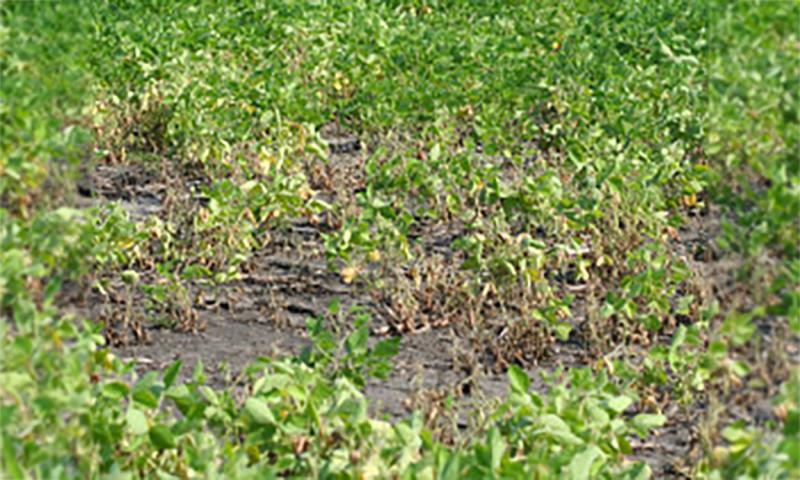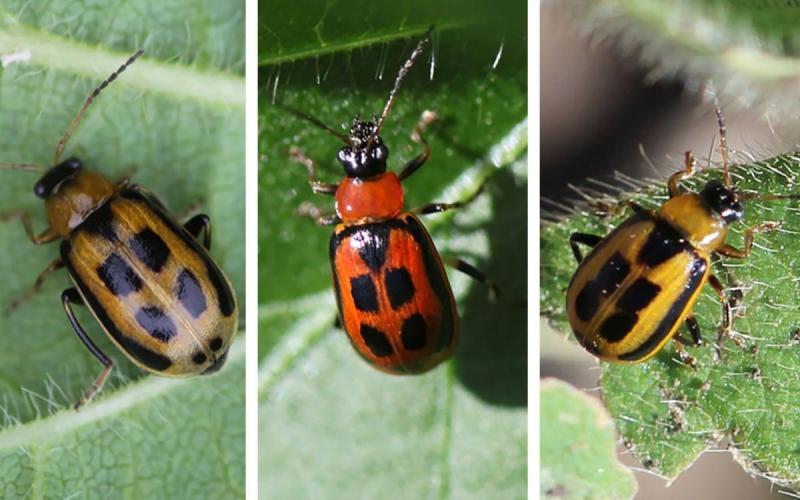
Written by Nabina Karki, SDSU Graduate Research Assistant, under the direction and review of Connie Strunk and Madalyn Shires.
Current weather conditions of continuous rainfall are saturating our fields, which is creating a favorable environment for Phytophthora root and stem rot. This disease is caused by a soil pathogen, Phytophthora sojae. It is very destructive, infecting soybeans at any growth stage, from seed to maturity, and can cause significant yield loss. The disease severity is high in poorly drained fields with high clay content, and in fields with intensive no-till management practice.
The fungus can survive on crop residues and in the soil as oospores for 5 to 10 years. When soil moisture is high, the spores germinate and are attracted to root exudates produced by the soybean. The fungus infects the roots and begins disease development.
Symptoms
Symptoms can be observed as early as the seedling stage, causing infected germinating seeds to rot before or shortly after germination. A characteristic dark brown discoloration (chocolate brown) is observed on the stem, starting from the soil line and moving up the stem of the plant (Figure 1). The lesion restricts the movement of nutrients and water. Taproots appear brown, nodule formation is drastically reduced, and the entire root system may rot. Eventually, plants turn yellow, followed by wilting and death.

Identification
Correctly identifying this disease or any other fungal, bacterial, or viral disease is extremely important, as it aids in management decisions. Please send plant disease questions to SDSU Extension Plant Pathology Specialist Dr. Madalyn Shires or SDSU Extension Plant Pathology Field Specialist Connie Strunk.
Samples can also be sent to the SDSU Plant Diagnostic Clinic. The clinic’s mailing address is 140 Raven, Box 2100A 1451 Stadium Road Brookings, SD 57007-1090 and the physical address for sample drop off is Berg Ag Hall Room 001. For more information, visit the SDSU Plant Diagnostic Clinic website.
Management
- The most-effective management tool is the use of resistant varieties. Partial resistance is available with most varieties out there, which is effective against most Phytophthora pathotypes.
- Fungicide seed treatments can provide early protection to germinating seeds and seedlings. Consult the latest South Dakota Soybean Pest Management Guide for more information.
- Improving soil drainage and managing surface water levels in poorly drained fields can help to prevent disease outbreaks.
- Avoid farming practices that compact the soil.
- Practice crop rotation with non-host crops to avoid an increase in fungal inoculum.

